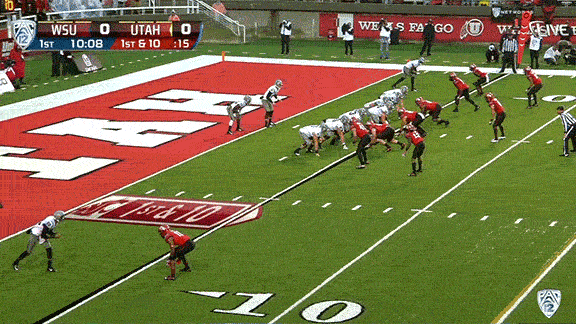Combine workouts don't provide great insight into a quarterback's ability to diagnose Cover 2 or an inside linebacker's ability to sniff out misdirection. They are never going to trump tape in terms of importance to a player's evaluation. History has also shown that teams get burned for overvaluing strong combine performances (the 49ers drafting WR A.J. Jenkins with the 30th overall pick in 2012 is an example that comes to mind).
The workouts do have considerable value, though, as they verify or discredit if a player is as quick, agile or fast as he looks on tape. They also uncover players with rare upside and on whom teams could take a flyer on Day 3 of the draft.
Here are my top 10 athletes in the 2015 draft class, in large part based on their performances at the scouting combine. These players have the tools to compete at a high level in the NFL, yet their draft slots vary greatly because of differences in tape, experience, injury history and intangibles.
I've included GIFs of plays for each player that highlight their elite athleticism.
1. Byron Jones, CB, UConn
Jones tops this list, even though he didn't run the 40 because he's recovering from a shoulder injury. He is believed to have shattered the combine record for the broad jump when he posted a ridiculous 12 feet, 3 inches, and his 44.5-inch vertical is more than 9 inches higher than the five-year combine average for corners. He also posted quick short shuttle and three-cone times.
He isn't just a track star. Jones is fluid, has good balance and flashes above-average recovery speed, which is why he has moved into the early-second-, late-first-round conversation. His stock could continue to rise if he runs as well as expected at his pro day in March.

2. Chris Conley, WR, Georgia
The five-year combine 40 time average for receivers is 4.54; Conley ran a 4.35 at almost 6-foot-2 and 213 pounds. The jumps are also important tests when it comes to predicting NFL success for receivers. His 45-inch vertical and 11-7 broad jump are significantly above average. Throw in his 33¾-inch arms and Conley is an explosive prospect with a wide catching radius.
Though he put up good numbers against Georgia Tech that year, Conley lost some steam after missing two games with an ankle injury in 2013. He didn't have a breakout senior season, so he has flown under the radar. He flashes big-play ability and good ball skills, most notably on the Arkansas tape, but he appears faster than quick and is a little mechanical as a route runner. He has gone from a potential free agent and moved into the Day 3 mix.

3. Vic Beasley, OLB, Clemson
Like many others, I had concerns about Beasley's frame heading into the combine. He eased them by weighing in at 246 pounds, but how well would he carry the added weight on his 6-3 frame? He ran the fastest 40 in addition to posting the third-highest broad (10-10) and vertical (41 inches) jumps for the outside linebacker group. Plus, his short shuttle time (4.15) is slightly quicker than the five-year combine average for corners and his three-cone time (6.89) is quicker than the five-year combine average for safeties.
Beasley's natural ability consistently shows up on tape, and he is one of the most dangerous edge rushers in this class. He is the No. 19 prospect on our board and could go much earlier because of the demand for edge rushers.
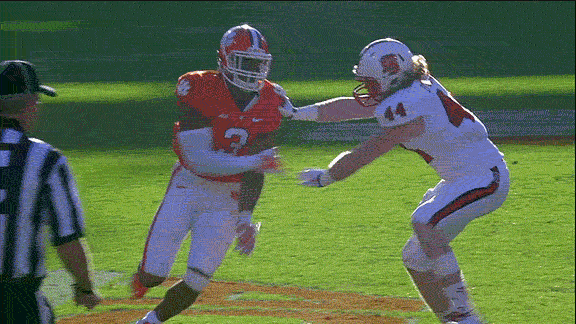
4. Kevin Johnson, CB, Wake Forest
Johnson cracks the top five, even though he ran the 15th-fastest 40 out of all the corners at the combine. He posted the fastest short shuttle time (3.89) and the fifth-fastest three-cone time (6.89) among corners. Those times are impressive considering that taller players generally don't fare as well in these drills, and Johnson measured 6-0. Plus, he posted excellent broad and vertical jump numbers.
He doesn't have Jones' recovery speed, but his 4.52 40 is slightly quicker than the five-year combine average for corners (4.55) and he runs well on tape. More importantly, his cover skills graded out as outstanding and he has above-average instincts when you throw on the tape. Johnson is the second-ranked corner on our board and could go in the top 15.
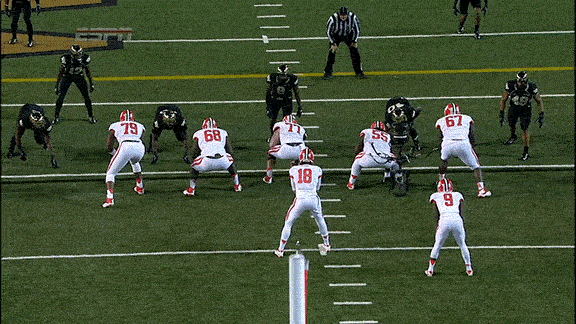
5. Bud Dupree, OLB, Kentucky
Few players carry their weight as well as Dupree, who is on the heavier and taller side at 6-4, 269. Dupree ran a 4.56 40, slightly faster than the five-year combine average for corners (4.55), and no linebacker jumped farther (11-6 broad jump). Dupree's 42-inch vertical was the second highest of the linebacker group.
Dupree projects as a fringe first-round pick despite his considerable natural ability, and his hands are one of the biggest reasons. He can do a better job of keeping blockers off his frame and countering when he does get reached.
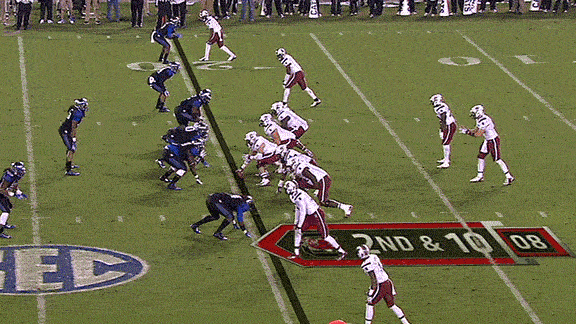
6. Jake Fisher, OT, Oregon
The 6-6, 306-pound Fisher ran well in Indy, positing a 5.01 40, but it's the foot speed he demonstrated that separated him from the rest of the offensive linemen. His 4.33 short shuttle time is better than the five-year combine average for tight ends, and his 7.25 three-cone drill time is quick for an offensive tackle.
Fisher is an archetypal positional blocker with the quickness and athletic ability to wall off his assignment. He flashes an edge but doesn't show a violent punch or have the power base to move defenders off the ball, so he projects as a fringe second-round pick.
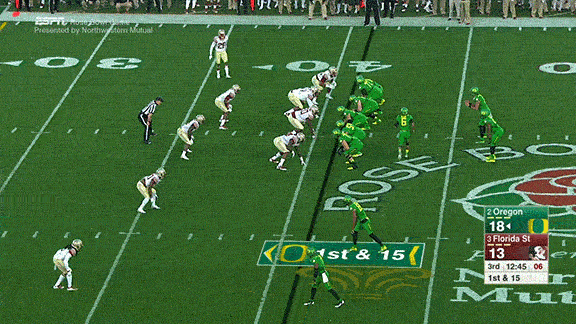
7. Stephone Anthony, LB, Clemson
At a little over 6-2 and 243 pounds, Anthony ran a 4.56 40 in addition to recording a 37-inch vertical jump and a 10-2 broad jump. However, his 4.03 short shuttle time stands out because it's much quicker than the five-year combine average for corners.
Anthony is an effective run-stopper with the strength to hold up between the tackles and the range to make plays in pursuit, but as well as he tested, he doesn't show good body control in space on tape. He projects as a fringe second-round pick.
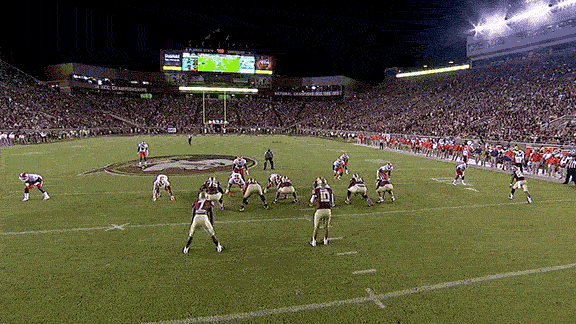
8. Kenny Bell, WR, Nebraska
Bell (6-1, 197) ran a 4.42 40 and jumped well, finishing with the third-highest vertical (41½) and fourth-longest broad (10-9) out of the receivers. Plus he posted the third-fastest three-cone time (6.66) and his 4.15 short shuttle time is quicker than the five-year combine average.
Nebraska's run-heavy scheme and shaky quarterback play didn't do Bell any favors, but he flashes on tape. He has deceptive top-end speed, and his smooth transition upfield makes him a threat after the catch. He projects as a Day 3 pick because of his leaner frame and inconsistency as a route runner.
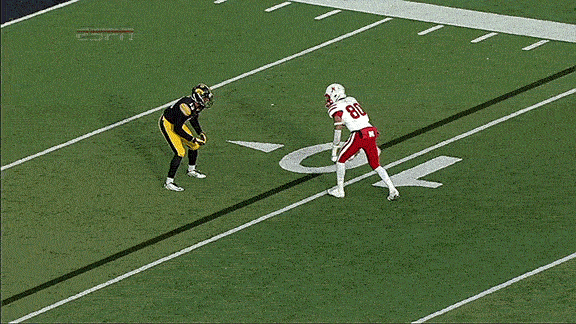
9. Owamagbe Odighizuwa, DE, UCLA
At 6-3, 267, Odighizuwa ran a 4.67 40, and his 4.19 short shuttle time is quicker than the five-year combine average for safeties. His explosiveness stood out on his jumps, as he recorded a 39-inch vertical and a 10-7 broad; both are among the top five for edge defenders at the combine.
There are concerns about Odighizuwa's durability that stem from him missing the 2013 season and undergoing surgery on both hips. He had a strong senior season, but his production -- 12.5 career sacks -- hasn't quite matched his talent. He projects as a second-round pick because he is strong against the run, has a nonstop motor and has above-average upside as a pass-rusher.
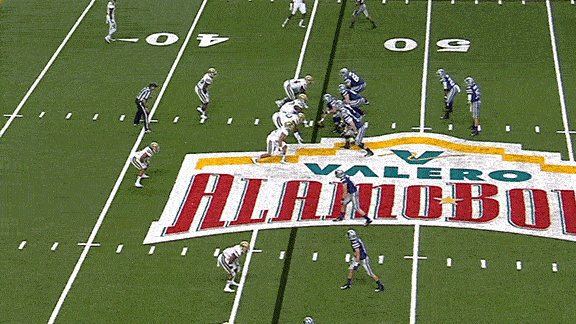
10. Eric Rowe, S, Utah
Rowe ran a 4.45 40 at 205 pounds and a shade under 6-1. More importantly, he eased concerns about his change-of-direction skills by posting a 3.97 short shuttle and a 6.70 three-cone drill. Both are excellent times for corners, let alone safeties and taller defensive backs.
He has average arm length (31½ inches) for the position despite his frame, and length has proved more important than some may realize when it comes to projecting defensive backs. He is not a proven playmaker and doesn't transition out of breaks as well as you would expect from a player with his ability, so he projects as a Day 3 pick.
